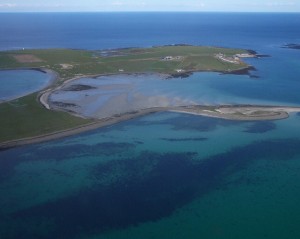
“The Wreck” (c.1835) by Knud-Andreassen Baade (1808-1879).
From the collection of the Victoria & Albert Museum.
The ballad “Sir Patrick Spens” is one of the oldest ballads in western Europe. It tells the story of a king who seeks the best and most experienced sailor in his kingdom for a dangerous and certainly life threatening journey. An unknown knight within the king’s company shouts out the name of Patrick Spens, and poor Patrick’s journey to certain death begins. The ballad is beautifully written and tells the haunting story of power and commitment, and the knowledge that this commitment will lead to death. Like many ballads covered in Murder Ballad Monday, this one belongs on the cusp of whether or not it is a murder ballad. We will discuss this and other aspects of this beautiful ballad.
So, wrap up warm as we travel back through time to an ancient kingdom on the north-west corner of Europe. Kris Drever will ably help us set the scene.
This ballad has been strongly linked to a historical event that happened in Scotland towards the end of the 13th century. In 1286, the King of Scots, Alexander III was deeply and passionately in love with his new bride, Yolande of Dreux. They had married the previous year, and Alexander, mindful that he did not yet have an male heir, was keen to leave the business of politics behind in Edinburgh, and travel across the river to Fife, where his bride was waiting. The only problem was the weather. Not for the first time the weather in Scotland was rather unseasonably bad. The King’s advisers pleaded with him to stay in Edinburgh until the morrow. The King would none of it and set off with a small group of aides. They had crossed the Forth, the river between Edinburgh and Fife, and set off for Kinghorn, where Yolande awaited the arrival of Alexander, in the middle of the night. No one really knows exactly what happened next. It is believed that Alexander had become separated from his guides in the stormy darkness. His body was found the next day with his neck broken. Alexander’s only living heir, his granddaughter, Margaret, known as the Maid of Norway, lived across the North Sea. It is this journey, and the associated sense of impending disaster for the Kingdom of Scotland, that links this ballad with this time in history.
Around this time, the Kingdom of Scotland had been at peace with the Kingdom of England. Alexander III was a well loved and respected King. His death was seen as a calamity and the deep sense of grief was furthered by the fact that the heir was was a very young child. The events that happened after this led to the military invasion of Scotland by Edward I of England and ultimately to the Wars of Independence, William Wallace and King Robert the Bruce’s huge victory at Bannockburn in 1314.
The fear and loathing in response to Alexander’s death weaves its way throughout this ballad, and is the inspiration behind the sense of doom that pervades the ballad.
Establishing the actual historical truth of the ballad clearly presents a few problems. As far as has been established, no historical record of a Sir Patrick Spens exists, and in keeping with ballad tradition, he is probably a fictional figure. There was a Sir Patrick Vans who in 1589 went with King James VI across the sea to Norway to bring the King’s new bride back to Scotland after stormy weather had kept her in Norway. There was no disaster, however, no powerful sense of foreboding, and certainly no tragic deaths associated with this journey. Long established belief in Papa Stronsay, a small isle on Orkney in the north of Scotland, holds that Sir Patrick Spens is buried here.
Matching the historical time of 1286 to the ballad’s narrative also presents problems. In the ballad, the king summons Spens to send him across the sea to Norway. Yet, we know that what led to the journey to Norway was in fact the death of the king. This is why, for me, the essence of the ballad is to explore the emotional experience rather than establishing the historical truth of an event.
Let us turn to the words and discover the fate of poor Patrick Spens.
At the heart of this ballad is the life of someone whose loyalty and commitment to his king leads to his death. There is a sense of helplessness in the ballad, of being broken whilst still alive. Spens becomes certain of his death almost from the very beginning.
Continue to page 2>>>
The post “The tear blindit his ee” – The story of “Sir Patrick Spens” appeared first on Sing Out!.

